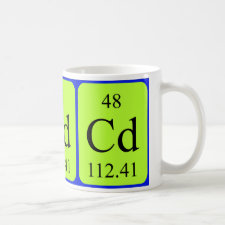
Authors: Kong QP, Xie BB, Preis S, Hu Y, Wu HZ, Wei CH
Article Title: Adsorption of Cd2+ by an ion-imprinted thiol-functionalized polymer in competition with heavy metal ions and organic acids.
Publication date: 2018
Journal: RSC Advances
Volume: 8
Issue: (16)
Page numbers: 8950-8960.
DOI: 10.1039/C7RA11811B
Abstract: The simultaneous presence of heavy metals and organic acids in nature and wastewaters and their competition for adsorption sites determine the migration, transformation and fate of pollutants in the environment. A Cd2+-ion-imprinted polymer (Cd2+-IIP) with a thiol-functional group was hydrothermally synthesized by a surface imprinting technique combined with ultrasonic heating for selective adsorption of Cd2+ from wastewaters. The adsorbent was characterized by SEM, EDS, XPS, BET and FT-IR measurements. The experimental results concerning Cd2+ adsorption from single-, binary-, ternary- and quaternary-metal aqueous solutions containing Cu2+, Ni2+ and Zn2+ revealed high selectivity. In binary-metal solutions, relative selectivity coefficients for Cd2+ in respect to Cd2+/Cu2+, Cd2+/Ni2+, and Cd2+/Zn2+ were as high as 3.74, 5.73 and 4.15, respectively. In multi-metal solutions, competing heavy metal ions had little effect on the adsorption of Cd2+ attributed to the high selectivity of Cd2+-IIP towards Cd2+ determined by its coordination geometry. The effect of low-molecular weight organic acids on the Cd2+ adsorption was also studied and the results showed that the presence of tartaric, citric and oxalic acids as admixtures in Cd2+ aqueous solutions noticeably reduced the cation adsorption in a wide range of concentrations with the minor exception of low contents of citric and tartaric acids slightly improving adsorption
Template and target information: cadmium ion, Cd(II)



Join the Society for Molecular Imprinting

New items RSS feed
Sign-up for e-mail updates:
Choose between receiving an occasional newsletter or more frequent e-mail alerts.
Click here to go to the sign-up page.
Is your name elemental or peptidic? Enter your name and find out by clicking either of the buttons below!
Other products you may like:
 MIPdatabase
MIPdatabase









